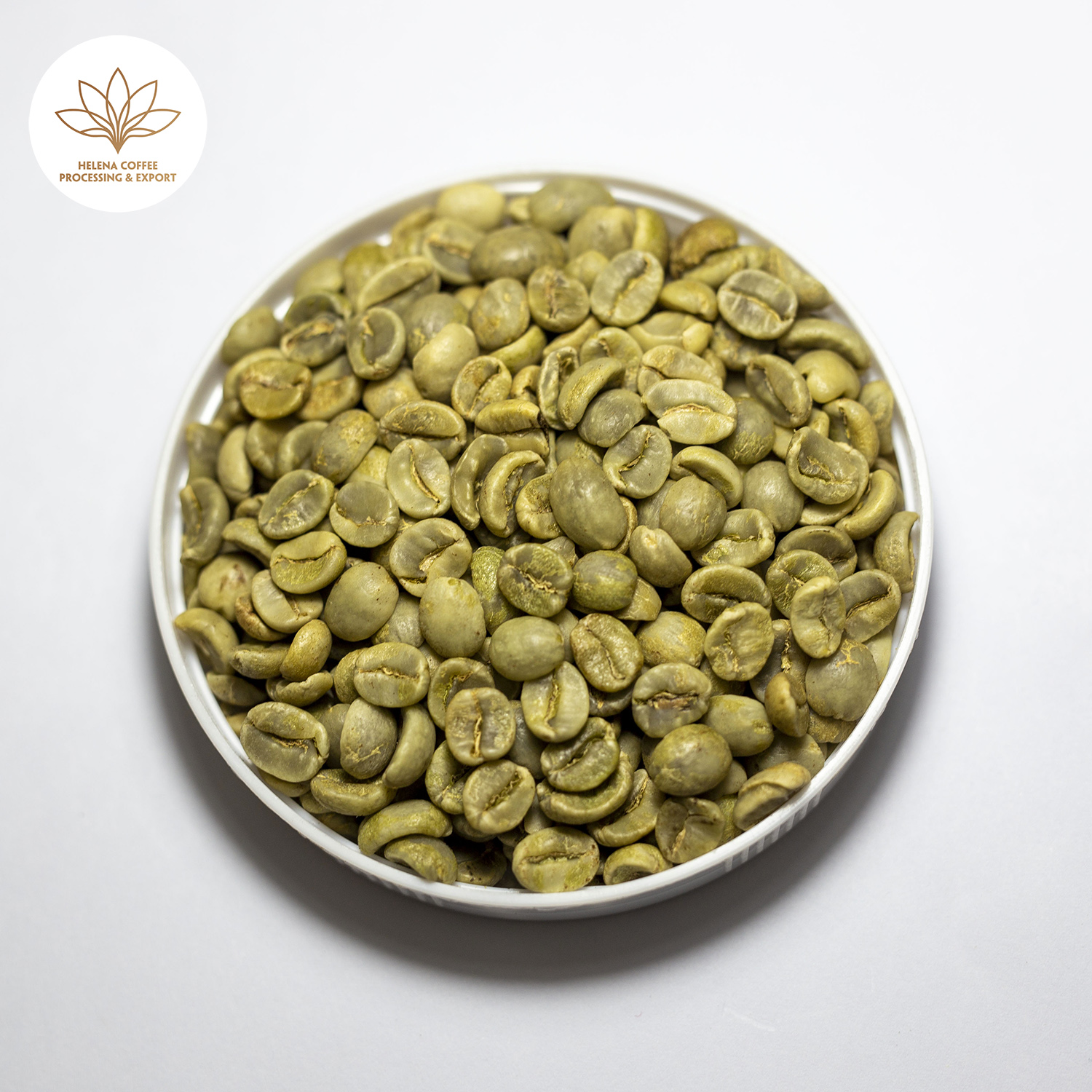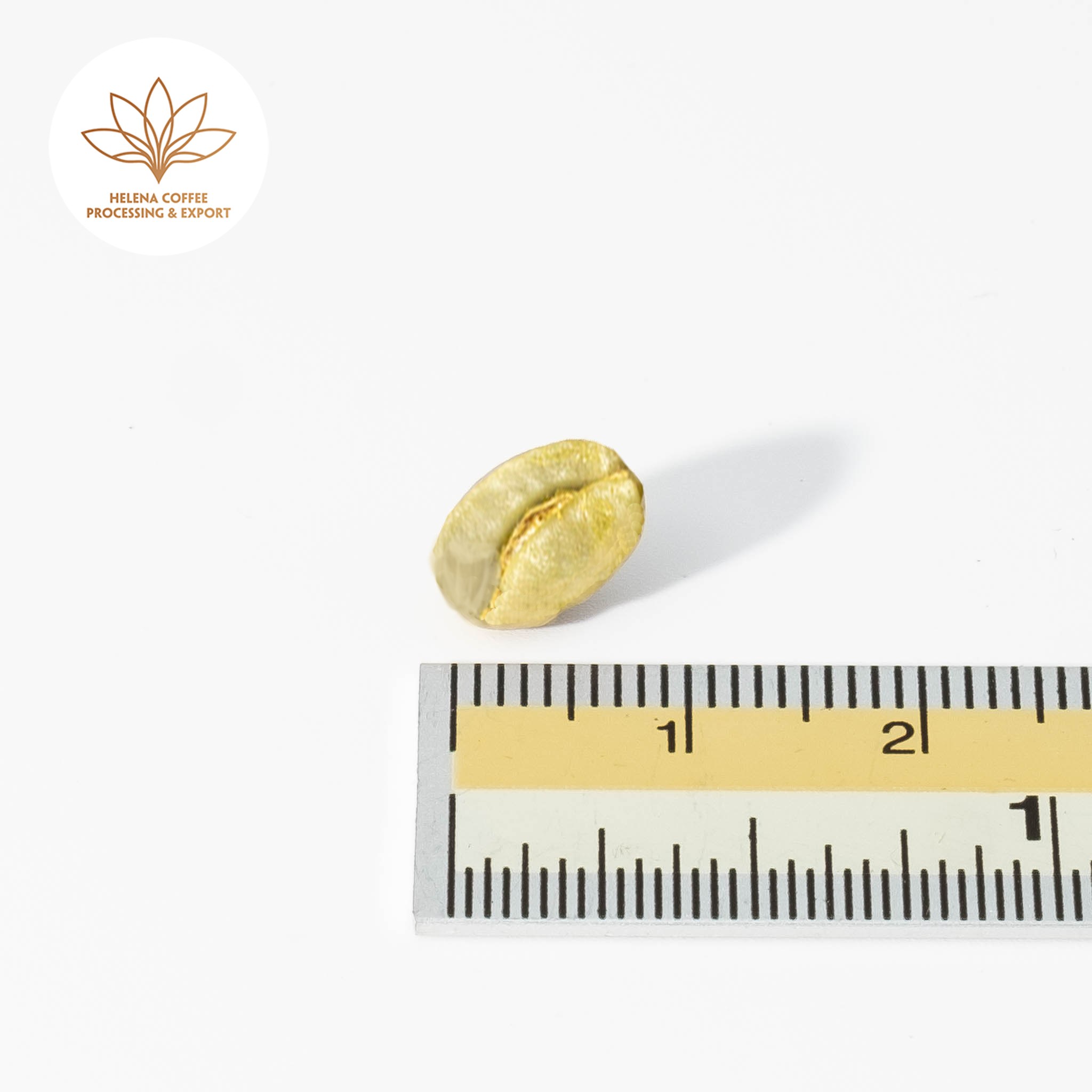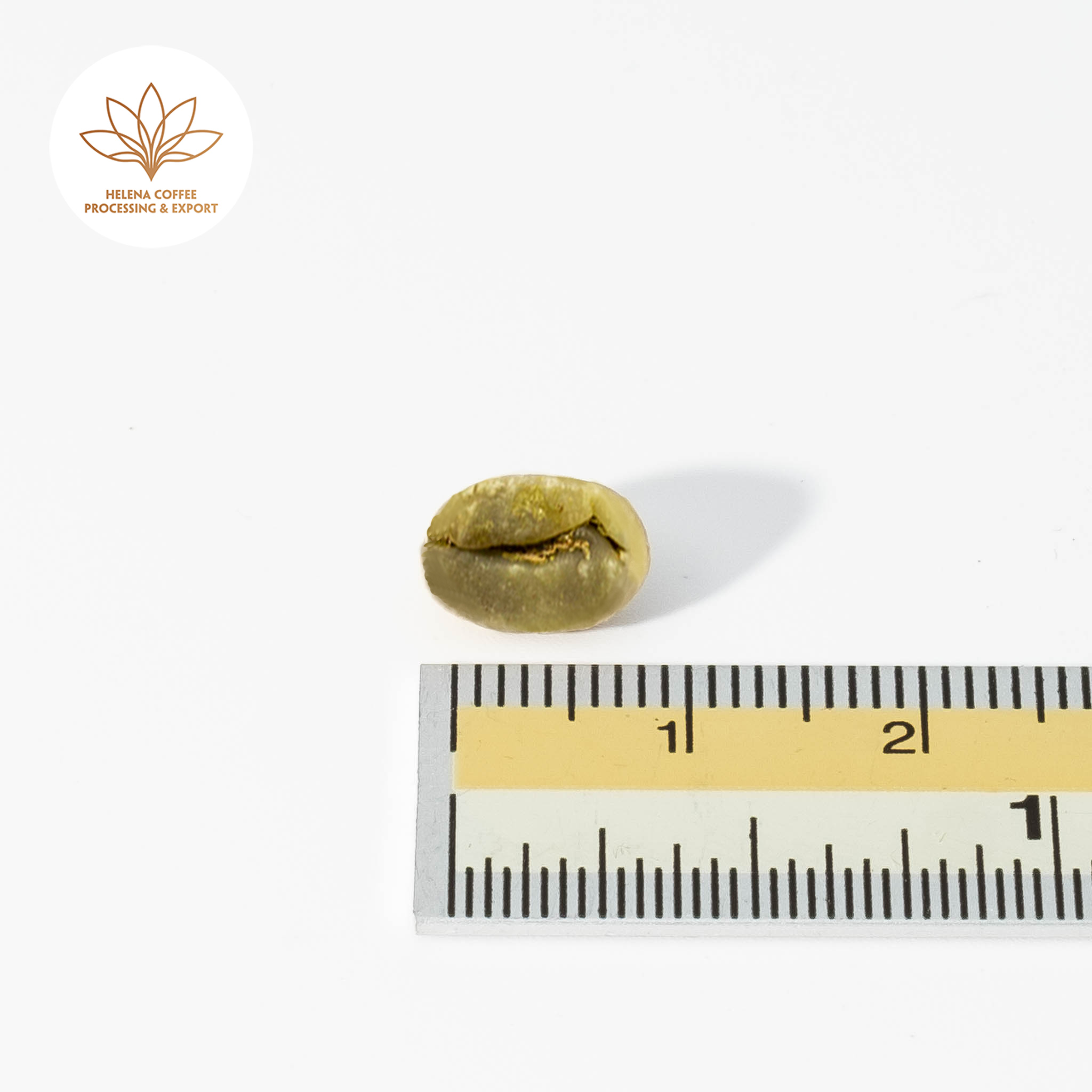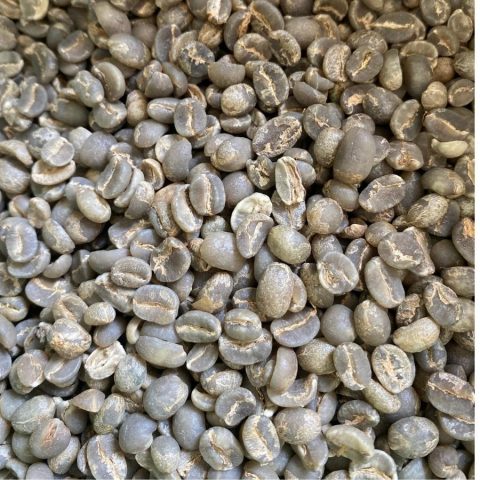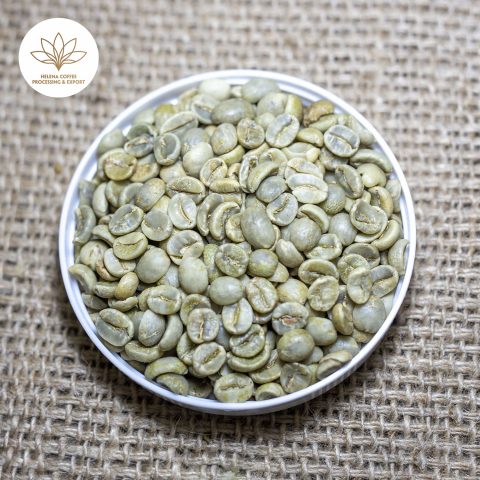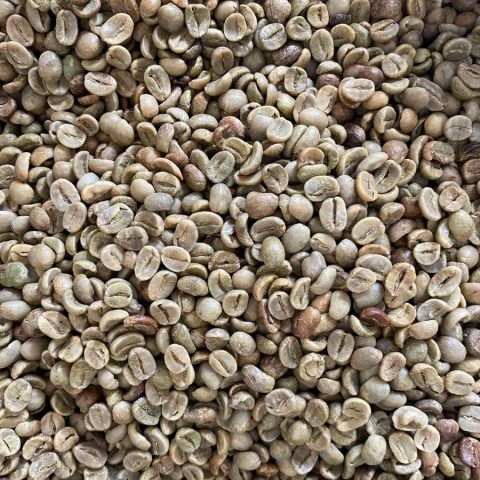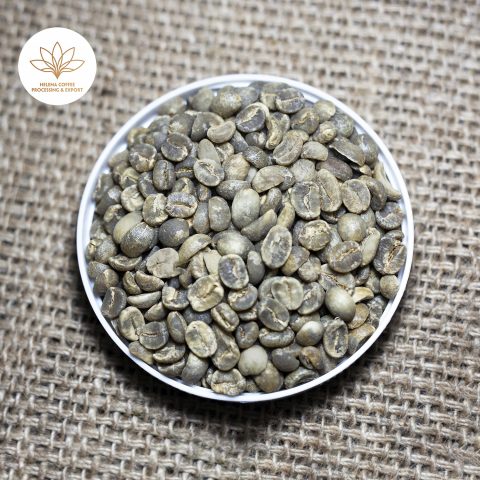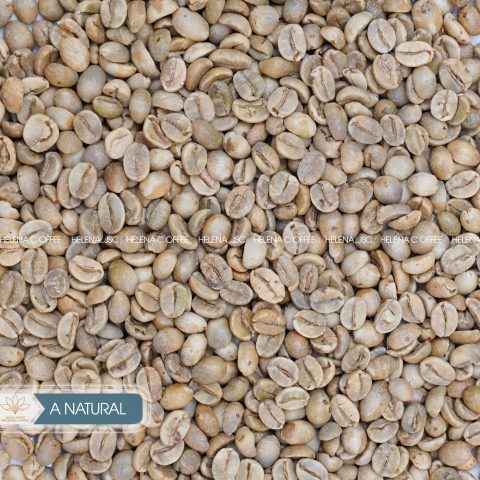Specialty Arabica Honey Coffee Bean
- Home
- Products
- Vietnamese Arabica Green Coffee Beans
- Specialty Arabica Honey Coffee Bean
Related products



Specialty Arabica Honey Coffee Bean is at an altitude of over 1,500m, with many gently sloping hills and a cool climate with red basalts. Cau Dat (Da Lat) is a prime location, ideal for Arabica coffee varieties to grow and produce beans. Arabica coffee quality is rated the second best in the world.
1. Characteristics of Specialty Arabica Honey coffee
Follow Highway 20, head to Don Duong district, meet National Highway 27, and go through Ngoan ,Muc pass down to Phan Rang, Ninh Thuan. About 25km from Da Lat, to the place of Cau Dat, in Xuan Truong commune, is the famous land specializing in coffee and tea cultivation.
The whole Xuan Truong commune currently has 1,270 hectares of agricultural land, of which up to 1,100 hectares is coffee, 98% is Catimo coffee (1 type of tea – Arabica coffee). In the past years, people have grown Moka coffee, but due to the epidemic of stem borers and beetles, they have gradually converted to arabica because the tree has better disease resistance and stronger drought tolerance.
Located at an ideal height, on average from 1450 – 1650m above sea level, the annual temperature range here ranges from the coldest 5 degrees and the highest does not exceed 33 degrees Celsius.
Combined with the soil is the fertile Basalt soil, Cau Dat – Da Lat has 3 golden conditions to be the perfect land for Arabica. Famous delicious Arabica varieties such as Typica, Bourbon, and especially Catimor with very high yields.
Each hectare of Arabica coffee yields 10 – 18 tons of fresh coffee, equivalent to 4 tons of green coffee. The kernel yield plus the price is higher than that of Voi coffee, helping Tea growers to be highly effective.
Thanks to the favorable factors of climate, soil and the specialization of Catimor tea over the years, Arabica coffee from Cau Dat stands out for its combination of ethereal sourness and mild bitterness. Cau Dat coffee has a clear and pure brown color, like amber. The taste of Cau Dat coffee is very fragrant, with a harmony of the smell of syrup, fresh fruit, honey, and the smell of sunny days.
It has a really distinctive and unforgettable taste that can impress even the most austere. Cau Dat Coffee can completely compete with coffee in other famous regions in the world. It is not natural that Starbucks Coffee – a famous worldwide coffee brand put the Cau Dat Tea coffee line into the global business chain.
1.1. What is Specialty Arabica Honey Coffee Bean?
The phrase “Specialty coffee” or “Speciality coffee” refers to coffee that has received a score of 80 points or more on a scale of 100 points from a qualified Q Grader or a certified coffee taster (SCAA) (CQI).
Specialty coffees are at their finest and distinct from other types of coffee because they were produced at the ideal altitude, at the proper time of year, on the best soil, and were then harvested at precisely the right moment. All of this results in some of the most intriguing and delicious coffee in the whole world.
| SCORE | GRADE | SPECIALTY YES/NO | |
|---|---|---|---|
| 90-100 | Outstanding | Specialty Coffee | |
| 85-89.99 | Excellent | Specialty Coffee | |
| 80-84.99 | Very Good | Specialty Coffee | |
| >80.0 | Below Specialty Quality | Not Specialty Coffee |
2. Honey Processing Method For Arabica Specialty
The name Honey might make you think of the use of honey in the processing. But it’s not like that. This processing method only removes the skin and flesh of the fruit but retains some of the mucus layer to be dried with the seeds. Depending on the purpose of the processor, it is possible to retain all or part of this mucus layer.
The mucilage layer will be retained to ferment along with Arabica coffee beans. During this time, the beans will reabsorb moisture from this mucus layer and become sticky. This sticky feeling resembles honey and that is the reason for the name Honey processing.
The key to the Honey processing method is control. The parameters of Arabica coffee beans are strictly controlled during the drying process from fermentation, sugar content in the mucilage layer, moisture content of the beans, etc.
So, technically, the honey processing method is to remove a part and then leave it to dry.
3. What Is The Taste Of Specialty Arabica Honey Coffee Bean?
Honey processing method: Requires very high requirements to control the parameters of Arabica coffee beans during processing. The controlled fermentation will result in Arabica coffee beans that have a stronger flavor than wet processing but at a moderate balance, not as strong as natural processing.
Certifications


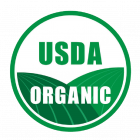
Discover the Alluring Aromas of Vietnamese Arabica Coffee
Vietnamese Arabica coffee captivates the senses with its exquisite flavors, hailing from the enchanting highlands of Cau Dat – Da Lat. As the country’s hidden gem, this exceptional bean boasts a unique and refined taste profile that sets it apart from its more widely-known counterpart, Robusta.
The cool climate and fertile soil of Cau Dat – Da Lat nurture these Arabica beans to perfection, allowing them to develop their full aromatic potential. As you indulge in the rich and complex notes of Vietnamese Arabica, you’ll uncover a delightful world of flavors that embody the dedication and passion of its growers.
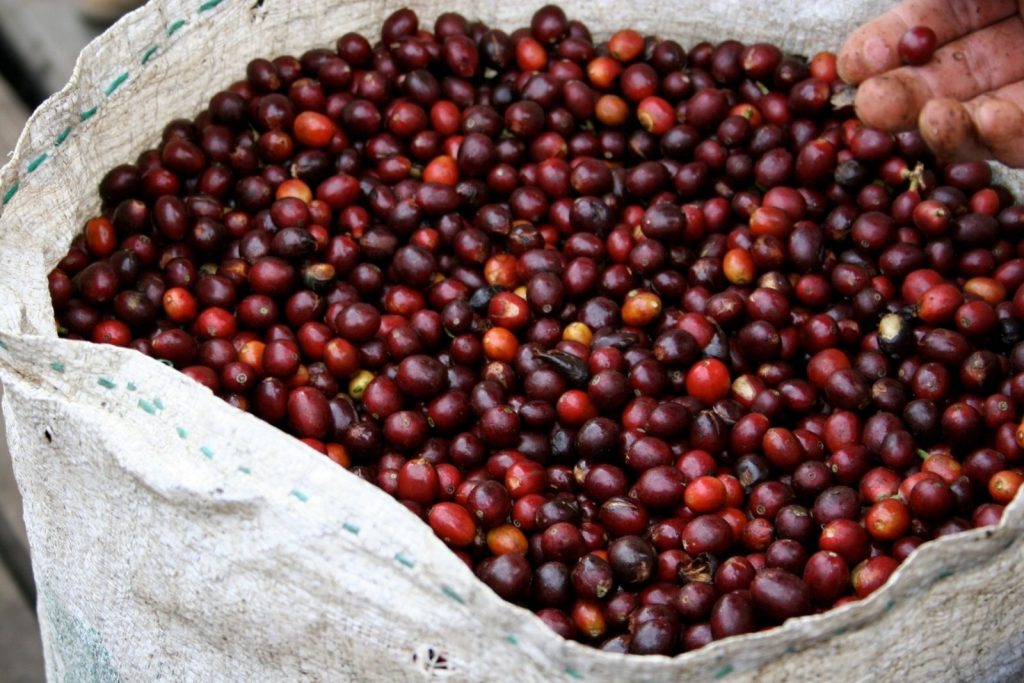
Environment
Precipitation, temperature, and humidity have a lot of say in a coffee’s maturation, overall flavor, and quality. Many coffee-producing countries are either primed for growing success or use alternative methods to improve their ecosystem.
Precipitation
1500m+
Temperature
17℃
Humidity
71%
Attitude
Elevated at over 1500 meters above sea level, the captivating Cau Dat – Da Lat region features a consistent temperate climate, with maximum temperatures never surpassing 33°C and minimums remaining above 5°C. The area’s fertile basaltic soil presents the optimal conditions for cultivating premium Arabica coffee.
Cau Dat’s distinguished Arabica exhibits a sophisticated blend of mild acidity and a hint of bitterness. Its transparent amber hue embodies the pristine environment from which it originates. The refined aroma harmonizes notes of syrup, fresh fruits, honey, toasted bread, and sunlit afternoons, creating a memorable sensory experience that captivates even the most discerning coffee aficionados.
Cau Dat’s Arabica confidently stands among the world’s elite coffee varieties, showcasing its unparalleled quality and the extraordinary potential of Vietnamese coffee.
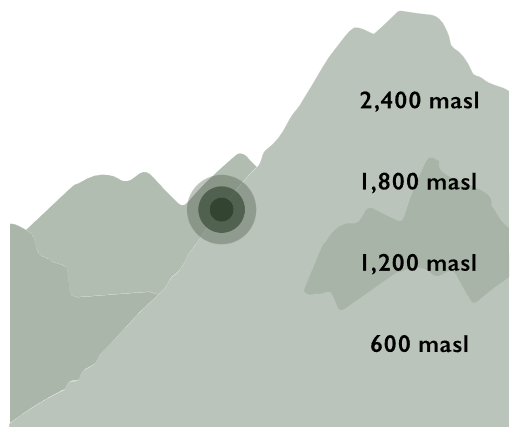
Processing
A coffee’s process describes how the seed (aka the coffee bean) is separated from the coffee cherry. Popular methods include washed, dry, and honey, but there are many other processes that put special emphasis on different aspects of these methods.
Washed
Fully Washed
Dried
Sun-dried
Natural
Fully Washed
Timeline
Harvest and export times are based off when a particular coffee will be at its peak quality. Cherries picked at the start of the harvest season tend to be underdeveloped, and those picked at the end are often overdeveloped, so producers aim for that sweet
Harvest
Export
Dec – Sept
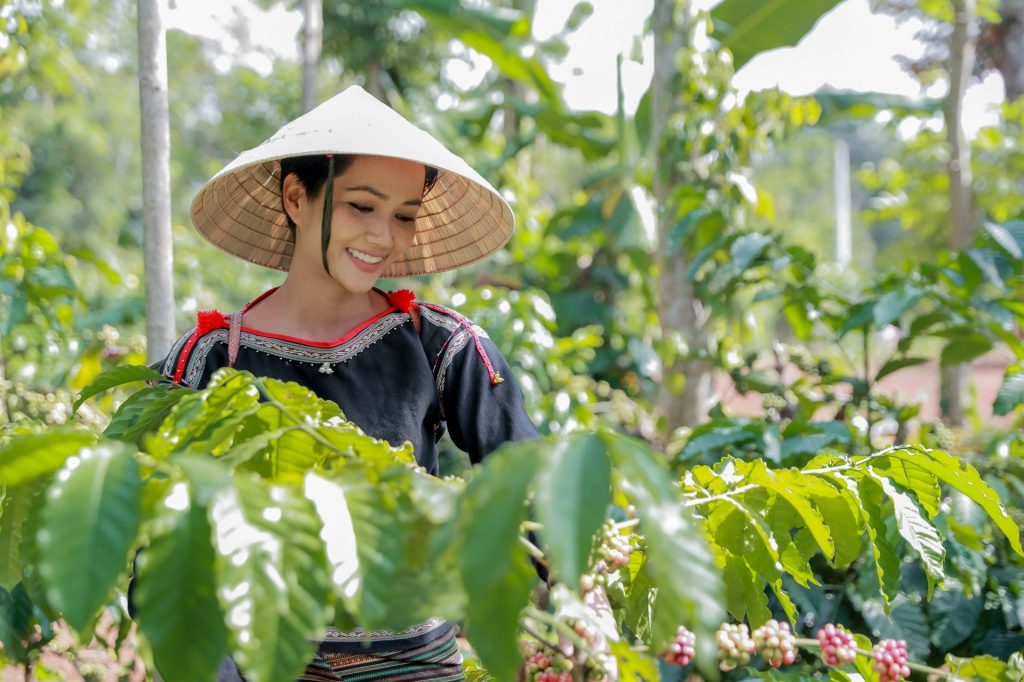
Cau Dat - Da Lat
Nestled just 24km from Da Lat city in Lam Dong Province, Cau Dat resides within the renowned Central Highlands of Vietnam. Boasting an ideal elevation and climate, this region has emerged as one of the premier locations for growing exceptional Arabica coffee.
With a vast expanse of 1,110 hectares dedicated to coffee cultivation—86% of the agricultural area—Cau Dat focuses predominantly on Arabica coffee, which makes up 98% of the total coffee crop. Remarkably suited to the local natural conditions, Cau Dat’s coffee plants thrive with minimal impact from pests. Each hectare yields an impressive 18-20 tons of fresh coffee cherries, equivalent to 4 tons of coffee beans, outpacing productivity in many other regions.
Discover the magic of Cau Dat’s Arabica coffee, where the perfect blend of elevation, climate, and dedication to quality come together to create a truly remarkable and unforgettable coffee experience.
Cau Dat has a total area of 1,110 hectares of coffee growing, accounting for 86% of the agricultural area. Especially, the area for Arabica coffee accounts for 98% of the total. Cau Dat coffee species generally really suit the natural conditions of this land and barely get affected by pests. Each hectare of the cultivated area can provide 18-20 tons of fresh coffee berries, equivalent to 4 tons of coffee beans. The productivity is much higher than other types.
